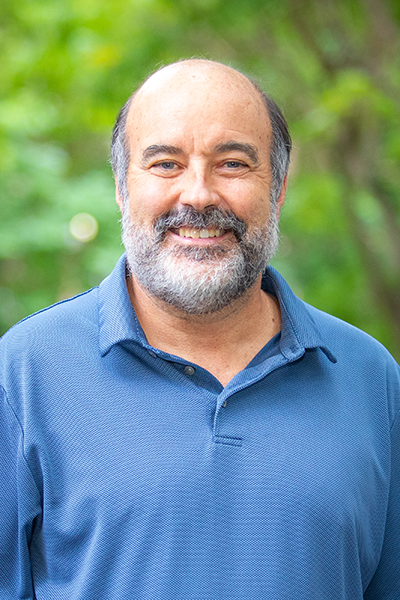News
Microbes convert mercury to methylmercury, the organic compound that accumulates in fish, finds its way to our dinner plates, and has been associated with neurological and cardiovascular damage. (Photo courtesy of Vandan Desai Photography/Creative Commons.)
Left to right, Elsie Sunderland, Helen Amos, and Daniel Jacob, pictured at the Harvard School of Engineering and Applied Sciences. Coauthor David G. Streets, not pictured, is based at Argonne National Laboratory in Illinois. (Photo by Eliza Grinnell, SEAS Communications.)
Cambridge, Mass. - July 8, 2013 - Environmental researchers at Harvard University have published evidence that significant reductions in mercury emissions will be necessary just to stabilize current levels of the toxic element in the environment. So much mercury persists in surface reservoirs (soil, air, and water) from past pollution, going back thousands of years, that it will continue to persist in the ocean and accumulate in fish for decades to centuries, they report.
"It's easier said than done, but we're advocating for aggressive reductions, and sooner rather than later," says Helen Amos, a Ph.D. candidate in Earth and Planetary Sciences at the Harvard Graduate School of Arts and Sciences and lead author of the study, published in the journal Global Biogeochemical Cycles.
Amos is a member of the Atmospheric Chemistry Modeling Group at the Harvard School of Engineering and Applied Sciences (SEAS), where researchers have been collecting historical data on mercury emissions as far back as 2000 BC and building new environmental models of mercury cycling that capture the interactions between the atmosphere, oceans, and land.
Their model reveals that most of the mercury emitted to the environment ends up in the ocean within a few decades and remains there for centuries to millennia. These days, emissions are mainly from coal-fired power plants and artisanal gold mining. Thrown into the air, rained down onto lakes, absorbed into the soil, or carried by rivers, mercury eventually finds its way to the sea. In aquatic ecosystems, microbes convert it to methylmercury, the organic compound that accumulates in fish, finds its way to our dinner plates, and has been associated with neurological and cardiovascular damage.
It is generally assumed that mercury pollution began with the Industrial Revolution; in fact, humans have been releasing mercury into the environment for thousands of years. Past research has found it stored in peat in Europe and in layers of sediment at the bottoms of lakes in South America. The ancient Greeks and Chinese used mercury as a pigment; pots of quicksilver have been found in tombs dating to about 2000 BC; and the Assyrians are thought to have used both quicksilver and cinnabar (the bright red ore in which mercury naturally occurs) as early as 1900 BC. In 1570 AD, Spanish colonists in Central and South America were using it to extract silver; 300 years later, mercury again featured in the California gold rush.
The environment does naturally release and cycle a certain amount of mercury, blasting it out of rock with each volcanic eruption, but the new model developed at Harvard demonstrates that humans have been, and continue to be, responsible for the majority of the mercury currently found in the atmosphere, soil, and ocean.
"Ideally, mercury released by human activities would quickly be sequestered in the environment, but instead what we see is a huge quantity of it bouncing from one reservoir to the next," explains senior author Elsie M. Sunderland, who is the Mark & Catherine Winkler Assistant Professor of Aquatic Science at the Harvard School of Public Health and an associate in environmental science and engineering at Harvard SEAS. "This means it continues cycling throughout the environment and persists for much longer timescales than most people realize, which has implications for long-term biological exposures."
The new model quantifies the impact of historical emissions deduced from archaeological and anthropological research into artisanal and industrial techniques, and for the first time couples seven different environmental systems into one holistic and coherent model.
"This model is built on the best available science, and what it's showing us is that if we want to reduce the amount of mercury in the environment, it's not enough to simply stabilize the amount that we're emitting," says Amos. "We would need to dramatically reduce it."
The results also draw attention to the contribution of historical emissions to the present-day mercury problem.
"Today, more than half of mercury emissions come from Asia, but historically the U.S. and Europe were major emitters," says second senior author Daniel J. Jacob, Vasco McCoy Family Professor of Atmospheric Chemistry and Environmental Engineering at Harvard SEAS and Professor of Earth and Planetary Sciences. "We find that half of mercury pollution in the present surface ocean comes from emissions prior to 1950, and as a result the contribution from the U.S. and Europe is comparable to that from Asia."
Other specific findings include the following:
- Anthropogenic emissions have increased the amount of mercury in the atmosphere, surface ocean, and deep ocean by factors of 7.5, 5.9, and 2.1, respectively, compared to natural conditions.
- 60 percent of the mercury currently being deposited in the atmosphere comes from legacy mercury, released by humans in the past, that continues to cycle throughout the environment. Only 13 percent of current mercury deposition is natural in origin. The remaining 27 percent comes from present-day anthropogenic emissions.
- At least half of the current anthropogenic mercury content of the surface ocean originated before 1950.
"The projections of atmospheric mercury deposition and ocean concentrations that have informed policymakers developing the recent global mercury treaty underestimated the amount of future accumulation, because they did not account for the full burden of legacy mercury in the environment," notes Sunderland. "Our study reinforces the need for immediate and stringent emissions controls globally, to the extent technologically possible, to avoid future human health risks. Already, the costs of methylmercury exposure in Europe and the United States have been estimated at upwards of $15 billion."
Amos, Jacob, and Sunderland were joined in this research by coauthor David G. Streets, an Energy and Environmental Policy Scientist at Argonne National Laboratory.
The research was supported by grants from the National Science Foundation (NSF) (ATM0961357, OCE1130549) and the Electric Power Research Institute, with additional support from the NSF Graduate Research Fellowship Program.
This illustration shows how quickly a drop of mercury released into the atmosphere (top row), soil (middle), or ocean (bottom) finds its way to the soil (green), ocean (blue), or atmosphere (yellow), over time (left to right). It can take hundreds of years for the mercury to be locked away in the deep ocean or minerals. (Image courtesy of Helen Amos.)
Topics: Environment, Climate
Cutting-edge science delivered direct to your inbox.
Join the Harvard SEAS mailing list.
Scientist Profiles
Daniel Jacob
Vasco McCoy Family Professor of Atmospheric Chemistry and Environmental Engineering




